Foothills Physical Therapy Blog
Monday, November 6, 2023
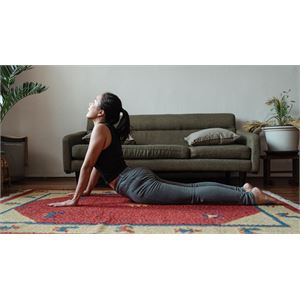 As the temperature drops and the days become shorter, our bodies often feel the effects of the cold weather. Cold temperatures can cause muscles to tighten and make us more prone to injury. It's essential to maintain flexibility and mobility, which is where stretching comes in. In this blog post, we'll explore the importance of incorporating stretching into your daily routine, with a focus on how it can be particularly beneficial during the colder months.
The Benefits of Stretching
Stretching offers a multitude of advantages for your physical and mental well-being. Here are some key benefits:
1. Improved Flexibility: Stretching regularly increases your range of motion, allowing you to move more freely and with greater ease.
2. Injury Prevention: Flexible muscles are less likely to become strained or injured, which is especially crucial when the cold weather can make your muscles feel tight.
3. Reduced Muscle Tension: Stretching helps to alleviate muscle tension and soreness, which can be exacerbated by the cold.
4. Enhanced Blood Circulation: Stretching improves blood flow to your muscles, which is vital for their health and recovery.
5. Stress Reduction: Stretching can have a calming effect on your mind and body, helping to reduce stress and anxiety.
Incorporating Stretching into Your Daily Routine
Now that we understand the benefits of stretching, let's discuss how to incorporate it into your daily routine, especially during the colder months:
1. Morning Stretch: Begin your day with a gentle stretching routine to wake up your muscles. Focus on your major muscle groups, like your legs, arms, and back.
2. Desk Stretches: If you work at a desk, take short breaks to stretch your neck, shoulders, and wrists. These simple stretches can help alleviate the stiffness that often accompanies sitting for long periods, which can be more pronounced in cold weather.
3. Before Exercise: Prior to any physical activity, warm up with dynamic stretches to prepare your muscles. After your workout, perform static stretches to cool down and increase flexibility.
4. During TV Time: Use your favorite TV show as an opportunity to stretch. Perform seated or standing stretches during commercials or between episodes.
5. Nighttime Routine: Wind down before bedtime with a calming stretching routine. This can help you relax and sleep better, especially during the dark and chilly evenings of winter.
Stretching in Cold Weather
Cold weather can have a significant impact on your muscles and joints. As temperatures drop, your muscles may contract and become less pliable, making them more susceptible to injury. To counter this, make sure to:
1. Warm Up: Spend a few extra minutes warming up before stretching in cold weather. This can include light aerobic exercises or even a warm shower.
2. Indoor Stretching: When it's frigid outside, consider doing your stretching routine indoors where it's warm. A comfortable environment makes it easier to relax and perform effective stretches.
3. Layer Up: Dress warmly to keep your muscles from cooling down too quickly while you stretch. Layers can be removed as you warm up.
4. Hydrate: Staying well-hydrated is crucial, even in cold weather. Dehydration can lead to muscle stiffness and reduced flexibility.
Stretching is a simple yet highly effective way to maintain flexibility and prevent injuries, which is particularly important during the colder months. By incorporating stretching into your daily routine, you can enjoy the numerous physical and mental benefits it offers. Remember to adapt your stretching routine to the chilly weather, taking extra precautions to keep your muscles warm and flexible. Your body will thank you with increased mobility and a reduced risk of cold-weather-related injuries.
Posted by isabellesiegrist at 11/6/2023 5:40:00 AM
Monday, October 16, 2023
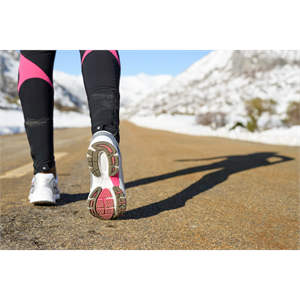
As the cold autumn weather sets in and the temperatures drop, many individuals find themselves facing increased joint pain. Whether you're a seasoned athlete, an active senior, or someone who simply enjoys the changing seasons, cold weather can bring about discomfort in our joints. However, there's good news – physical therapy can be an effective tool in alleviating joint pain during the colder months. In this blog post, we'll explore how physical therapy can help you stay active, reduce pain, and enjoy the beauty of the season.
Understanding Cold Weather Joint Pain
Cold weather can have a profound impact on joint health. The drop in temperature and changes in atmospheric pressure can cause joints to stiffen and become less flexible. This stiffness often leads to pain, especially for those who already have underlying joint issues such as arthritis or past injuries.
How Physical Therapy Can Make a Difference
Customized Exercise Programs
One of the primary ways physical therapy can help is by developing customized exercise programs tailored to your specific needs. A physical therapist will assess your joint condition, mobility, and pain levels to create a program that focuses on improving joint function, strength, and flexibility. These exercises can help counteract the stiffness caused by cold weather.
Manual Therapy
Physical therapists are skilled in a variety of manual therapy techniques, including joint mobilization and soft tissue manipulation. These hands-on approaches can help increase blood flow to the affected areas, reduce muscle tension, and improve joint mobility, all of which contribute to pain relief.
Education on Joint Protection
Physical therapists can also educate you on joint protection strategies. This includes techniques for maintaining proper posture, using assistive devices when necessary, and making ergonomic adjustments in your daily life to minimize joint stress during colder weather.
Heat and Cold Therapies
Heat and cold therapies can be incredibly effective in managing joint pain in cold weather. Physical therapists can guide you on when and how to use these therapies to reduce inflammation and ease discomfort.
Lifestyle Modifications
Your physical therapist may also recommend lifestyle modifications to help you manage joint pain in the cold. This could include dietary changes, weight management, and guidance on incorporating anti-inflammatory foods into your diet.
Don't let cold weather keep you from enjoying the activities you love or even just moving pain-free. Physical therapy can be a valuable ally in your battle against joint pain during the colder months. By working closely with a physical therapist, you can develop a personalized plan to improve joint health, reduce pain, and ensure that you make the most of the beautiful autumn and winter seasons. Remember, your journey to joint pain relief starts with that first step – scheduling a consultation with a physical therapist who can assess your needs and create a tailored plan just for you. Embrace the season with confidence and comfort!
Posted by isabellesiegrist at 10/16/2023 5:34:00 AM
Monday, September 18, 2023

The crisp autumn air, the vibrant hues of leaves, and the satisfying sound of them crunching underfoot – fall is undoubtedly a beautiful season. However, with the arrival of fall also comes the task of raking leaves. While raking may seem like a simple chore, it's important to remember that improper technique and poor posture can lead to discomfort and even injury. As physical therapists, our goal is to ensure you enjoy the season while keeping your body safe. In this guide, we’ll walk you through the proper techniques and postures for raking leaves.
Before you grab that rake and start working, take a moment to prepare your body. Gently stretch your back, shoulders, and arms to warm up your muscles. A few simple stretches can help prevent strains and stiffness later on. Additionally, wearing comfortable clothing and supportive footwear will enhance your stability and overall comfort.
Selecting the right tools can significantly impact your raking experience. Opt for a rake with an ergonomic handle that allows for a natural grip. This will help reduce the strain on your wrists and forearms. Consider using a rake with adjustable length so you can customize it to your height, further promoting proper posture.
One of the most crucial aspects of raking leaves is maintaining a neutral spine. Avoid rounding or hunching your back as this can strain your muscles and lead to back pain. Instead, stand up straight with your feet hip-width apart. Engage your core muscles to provide stability and support to your spine.
Use Proper Raking Technique
When raking, it's easy to get caught up in the repetitive motion and forget about your posture. However, using the right technique is essential to prevent injury. Hold the rake with a firm grip and use your legs to generate the majority of the force, rather than relying solely on your upper body. Bend your knees slightly as you rake, allowing your legs to power the movement and reducing strain on your back.
To avoid overworking one side of your body, alternate your grip on the rake handle every few minutes. This will distribute the workload evenly and prevent muscle imbalances. It's a small adjustment that can make a big difference in reducing strain.
Remember, raking is a physically demanding task. Taking breaks allows your muscles to rest and recover. Set a timer to remind yourself to pause every 20-30 minutes. During these breaks, perform gentle stretches to keep your muscles limber.
As you rake, periodically check your posture. Are you maintaining a neutral spine? Are your shoulders relaxed? Is your core engaged? Staying mindful of your posture can help prevent slouching and discomfort.
Just as you warmed up before starting, it's important to cool down after you've finished raking. Perform some gentle stretches to release any tension in your muscles. Pay extra attention to your back, shoulders, and arms.
Embracing the beauty of fall should not come at the cost of your physical well-being. By following these proper techniques and maintaining good posture while raking leaves, you can enjoy the season while safeguarding your body from discomfort and injury. Remember, taking care of your body today ensures you'll be able to savor many more autumns to come. \
Happy raking!
Posted by isabellesiegrist at 9/18/2023 6:39:00 AM
Monday, September 4, 2023

Happy Labor Day! Did you know 53% of Americans go on a road trip over Labor Day Weekend? While road trips promise adventure and excitement, they can also lead to discomfort and fatigue, especially when posture isn't given the attention it deserves. In this blog post, we'll be your guide to understanding the significance of maintaining proper posture during those long hours behind the wheel, and how it can turn your road trip into a comfortable and enjoyable experience.
The Perils of Poor Posture on the Road
Before we embark on this postural expedition, let's shed light on the challenges posed by poor posture during extended car rides:
-
- Muscle Fatigue: Slouching or adopting an awkward posture can place undue strain on your muscles, leading to discomfort and fatigue.
-
- Back Pain: Incorrect posture can cause your spine to lose its natural curve, potentially leading to back pain.
-
- Neck and Shoulder Strain: Hunching over the steering wheel or sitting with your neck at an angle can strain the muscles in your neck and shoulders.
-
- Reduced Blood Flow: Poor posture can impede blood circulation, leading to numbness, tingling, and discomfort in your legs and feet.
-
- Joint Stiffness: Prolonged sitting in a poor posture can result in joint stiffness and decreased flexibility.
Ergonomic Essentials for a Comfortable Ride
As you hit the open road, keep these ergonomic principles in mind to ensure a comfortable and pain-free journey:
-
-
Seat Adjustment: Adjust your seat so your feet comfortably reach the pedals without straining. Keep your knees slightly bent and your hips at the same level as your knees.
-
-
Back Support: Use a small pillow or cushion to support the natural curve of your lower back. This helps maintain proper lumbar support.
-
-
Steering Wheel Position: Adjust the steering wheel so your arms are slightly bent at the elbows and your wrists are comfortably placed on the wheel.
-
-
Headrest Position: Position the headrest so the middle of your head is aligned with the middle of the headrest. This promotes proper neck alignment and reduces strain.
-
-
Regular Breaks: Take short breaks every couple of hours to stretch your legs, walk around, and perform simple stretches to alleviate muscle tension.
Stretch and Strengthen on the Go
Embrace these simple exercises to combat the negative effects of sitting for extended periods:
-
Chin Tucks: Gently tuck your chin in, like you're making a double chin. Hold for a few seconds to counteract forward head posture.
-
-
Shoulder Shrugs: Lift your shoulders towards your ears, hold for a moment, and release. This helps release tension in your neck and shoulders.
-
-
Seated Spinal Twist: While stopped, gently twist your torso to the left and right, holding onto the seat or steering wheel for support.
As you embark on your next road trip, remember that the journey is as important as the destination. By practicing good posture, making ergonomic adjustments, and incorporating simple stretches, you can ensure that your adventure is not marred by discomfort and pain. Prioritize your comfort, and let the miles roll by with ease.
Posted by isabellesiegrist at 9/4/2023 6:59:00 AM
Monday, August 21, 2023
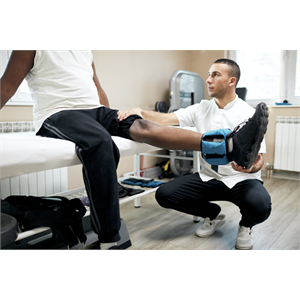
As physical therapists, we are passionate about helping our patients achieve optimal health and mobility. However, we often come across various misconceptions about physical therapy that can deter people from seeking the treatment they need. In this blog post, we aim to dispel some of these misconceptions and shed light on the true benefits of physical therapy.
Misconception 1: Physical Therapy Is Only for Athletes or Post-Injury Recovery
One of the most prevalent myths about physical therapy is that it's exclusively for athletes recovering from sports injuries. While physical therapy is undoubtedly effective in helping athletes return to their peak performance, it is not limited to them alone. Physical therapists cater to individuals of all ages and activity levels, addressing a wide range of conditions such as chronic pain, joint problems, post-surgical recovery, neurological disorders, and much more.
Misconception 2: Physical Therapy Is Always Painful
Some people shy away from physical therapy because they believe it involves painful exercises or treatments. In reality, physical therapists strive to create personalized treatment plans that prioritize patient comfort and gradual progress. While some therapeutic techniques may cause mild discomfort due to stretching and strengthening, the overall goal is to alleviate pain and improve mobility in the long run.
Misconception 3: You Need a Doctor's Referral to See a Physical Therapist
Contrary to popular belief, you don't always need a doctor's referral to visit a physical therapist. In many regions, patients have direct access to physical therapy services, meaning you can schedule an appointment without a referral from a physician. Physical therapists are highly trained healthcare professionals who can evaluate, diagnose, and treat various musculoskeletal conditions independently.
Misconception 4: Physical Therapy Is Expensive and Time-Consuming
Some individuals may hesitate to seek physical therapy due to concerns about cost and time commitment. However, physical therapy can be a cost-effective and efficient treatment option in the long run. Early intervention through PT can often prevent the need for more invasive procedures, saving both time and money. Additionally, physical therapists work with patients to develop treatment plans that fit their specific needs, making it a flexible and manageable process.
Misconception 5: Physical Therapy Is Only for Rehabilitation, Not Prevention
Physical therapy is not solely focused on rehabilitation; it also plays a crucial role in injury prevention and promoting overall wellness. Physical therapists can identify potential risk factors, address muscle imbalances, and provide exercise programs tailored to help individuals avoid injuries and maintain optimal physical function.
Misconception 6: You Can Perform Physical Therapy Exercises on Your Own
While some basic exercises and stretches can be beneficial, attempting to self-diagnose and self-treat complex musculoskeletal issues can be risky. Physical therapists are trained to provide individualized care, considering a patient's specific condition, medical history, and goals. They use evidence-based techniques to ensure the most effective and safe treatment.
It's essential to separate fact from fiction when it comes to physical therapy. The field of physical therapy has evolved significantly, and modern practices are designed to cater to diverse patient needs. Whether you're an athlete recovering from an injury, someone living with chronic pain, or seeking to improve your overall well-being, physical therapy can be an invaluable resource on your journey to better health.
If you have any questions or concerns about physical therapy, don't hesitate to reach out to a qualified physical therapist. We are here to provide expert guidance, personalized care, and a path toward a healthier, more mobile life. Let's debunk these misconceptions together and embrace the true potential of physical therapy!
Posted by isabellesiegrist at 8/21/2023 7:09:00 AM
Monday, August 7, 2023
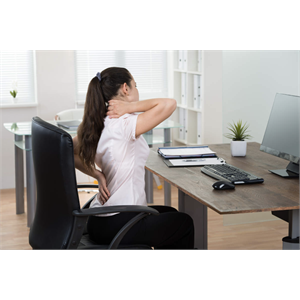
As dedicated physical therapists, we firmly believe that maintaining good posture is an integral aspect of overall health and well-being. Yet, many people overlook its importance and may not realize the significant impact it can have on their daily lives. In this blog post, we will delve into the significance of proper posture and how physical therapy can be a game-changer in helping you achieve and maintain it.
The Role of Posture in Everyday Life
Posture refers to the alignment of our body parts and the position in which we hold them while standing, sitting, or lying down. Poor posture can gradually lead to various health issues, affecting not only our musculoskeletal system but also our digestion, circulation, and even our mood. A sedentary lifestyle, prolonged hours of screen time, and improper ergonomics have contributed to an alarming increase in posture-related problems.
The Consequences of Poor Posture
-
Musculoskeletal Strain: Incorrect posture places undue stress on muscles, tendons, and ligaments, leading to pain and discomfort in the neck, shoulders, back, and hips.
-
-
Spinal Misalignment: Prolonged poor posture can cause the spine to lose its natural curvature, leading to issues like kyphosis (hunchback) or lordosis (swayback).
-
-
Joint Degeneration: Improper alignment can accelerate wear and tear on joints, potentially leading to conditions like osteoarthritis.
-
-
Reduced Lung Capacity: Slouched posture compresses the chest cavity, limiting lung expansion, and affecting breathing efficiency.
-
-
Digestive Issues: Poor posture can compress abdominal organs, leading to digestive problems and discomfort.
-
-
Negative Psychological Effects: Studies have shown a link between poor posture and decreased self-esteem, confidence, and increased stress levels.
How Physical Therapy Can Help Improve Posture
Physical therapists play a crucial role in identifying, assessing, and addressing posture-related issues. Here's how PT can help you achieve better posture and overall health:
-
Comprehensive Evaluation: Our expert physical therapists will conduct a thorough assessment to identify any postural imbalances, muscle weaknesses, or joint limitations.
-
-
Tailored Exercise Programs: Based on the evaluation, we will design personalized exercise programs to target specific muscle groups, strengthen weak areas, and improve flexibility.
-
-
Ergonomic Guidance: We will educate you on proper ergonomics for your workplace, home, and daily activities to promote better posture and prevent discomfort.
-
-
Manual Therapy Techniques: Physical therapists use hands-on techniques to release muscle tension, improve joint mobility, and correct alignment issues.
-
-
Postural Education and Awareness: We will teach you about the significance of maintaining good posture and provide tips to incorporate it into your daily routines.
-
-
Functional Training: PT will include functional exercises that mimic real-life movements, helping you maintain proper posture during various activities.
-
Remember, good posture is not just about aesthetics; it is the foundation for a healthy and pain-free life. Our team of dedicated physical therapists is here to support you on your journey to better posture and improved overall well-being. Whether you're dealing with existing postural issues or looking to prevent future problems, our comprehensive approach to physical therapy will help you achieve your goals and lead a healthier, more comfortable life.
Take the first step towards better posture and book a consultation with us today. Together, let's build a stronger, more aligned, and confident you!
Posted by isabellesiegrist at 8/7/2023 7:00:00 AM
Monday, July 24, 2023
 Cervicogenic dizziness is a common condition that affects many individuals, causing dizziness and a sense of imbalance. It is often overlooked and misdiagnosed, leading to prolonged suffering for those experiencing it. However, physical therapy is an effective treatment approach for managing cervicogenic dizziness. In this blog post, we will explore the causes, symptoms, and role of physical therapy in addressing this condition.
Posted by isabellesiegrist at 7/24/2023 8:00:00 AM
Monday, July 10, 2023
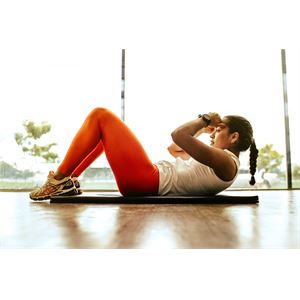 You know that painful feeling you have in your legs after you’ve been watching TV for a while, with your feet up on the coffee table, and then you try to get up to go to the bathroom? Your knees are super stiff and painful as you try to bend again! Or how about neck pain after a long day staring at your computer? Yeah all of that’s no fun.
Posted by isabellesiegrist at 7/10/2023 2:53:00 PM
Monday, June 19, 2023
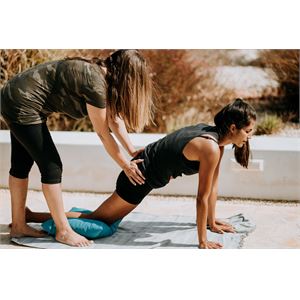 The pelvic floor is a group of 3 layers of muscles that functions to support the organs of the pelvis and abdomen including the uterus, bladder and rectum. These muscles also work directly with the bladder and bowel to expel urine and feces efficiently by contracting and relaxing at appropriate times.
Posted by isabellesiegrist at 6/19/2023 5:00:00 AM
Monday, May 22, 2023
 Think of that warm, soft feeling of sunlight hitting your face after a long day in the office. It’s rejuvenating, particularly in early spring. There are so many ways in which light, from the sun or other sources, can directly impact our health positively and negatively.
Posted by isabellesiegrist at 5/22/2023 9:00:00 AM
|